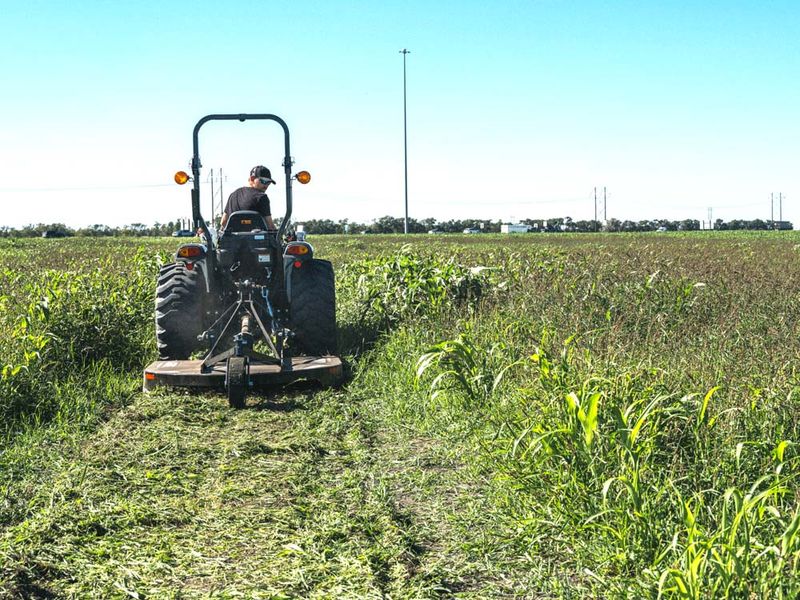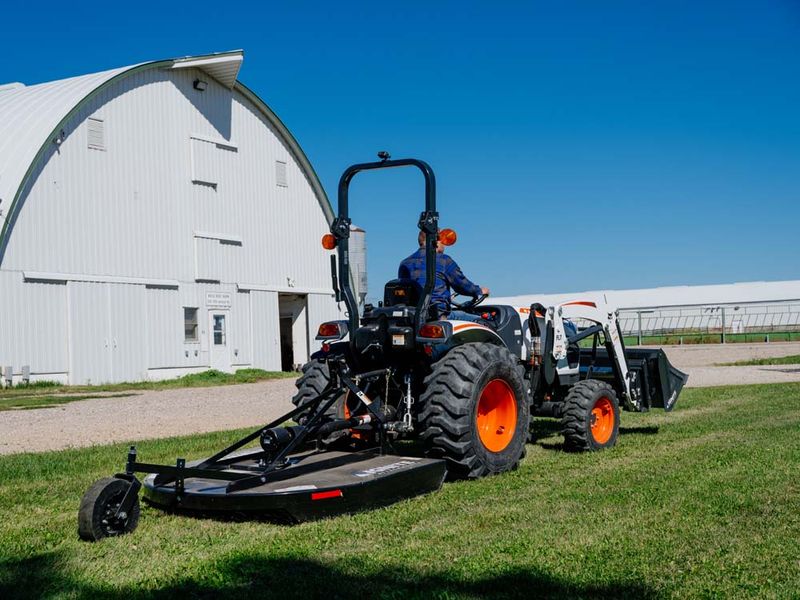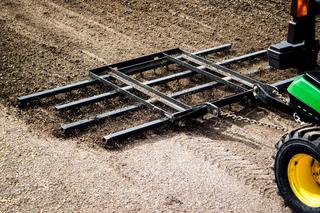3-Point Mower Selection Tips for Greener Pastures


What is it about mowing that keeps it from being a burden? The smell of fresh cut grass mixed with exhaust. The opportunity to enjoy the beauty of your property as you work. The feeling of power and accomplishment when the job is done. Mowing just doesn’t feel like a chore.
That doesn’t mean it shouldn’t be time- and cost-effective, however. Whether the goal is a perfectly manicured lawn or a strong-arm solution for wilder spaces, the right mower setup can provide what you seek … but you need to look at popular small-tractor mower options.
Brush-Hogging Beasts
Rotary mowers are ideal for tackling overgrown areas during clearing and cleanup. These heavy-duty mowers use the tractor’s PTO to power horizontally spinning blades that hack down tall grass and brush. Rotary mowers from reputable manufacturers should have no problem taking down 1-inch saplings, but don’t expect a close chop. These tools usually have a cutting height between 1.5 and 9 inches.
Generally, tractors 45 hp and under are best matched with a 48-inch rotary mower. However, some of these might also be able to handle a 60-inch model, which is typically recommended for tractors between 20 and 50 hp. 72-inch rotary mowers are available for tractors between 25 and 60 hp.
Work with equipment manufacturers to ensure the right fit. Some OEMs are making this easier than ever with reliable online tools, such as the Fit Finder from Ignite Attachments. These digital databases compile tens of thousands of specs from across compact tractor brands to provide the perfect pairing of machine and implement.
When it comes to maximizing ROI with a rotary mower, it’s important to consider maintenance and durability factors. These tools are designed for demanding applications. Look for models that are easy to service in the field. Additionally, there is a significant upfront price difference between rotary mowers with a shear bolt design compared to a slip clutch. When the blades hit a rock, limb or other debris too large for the mower, both designs function to protect the gearbox and driveline. It comes down to a question of budget in most cases.

Cutting it Close
For a manicured lawn, a finishing mower provides much more control than a rotary mower. This mower is designed specifically for grass with sharp blades that cut rather than hack. Maneuverability is important in a finish mower. Most models utilize caster wheels for better handling and even seating.
A floating top link option can provide more uniformity. In this design, the top link of the 3-point hitch floats forward and back to follow ground contours. This prevents gouging and keeps all four tires on the ground for an even cut over rolling terrain.
Finish mowers also come in several sizes, depending on tractor capabilities. A mower that’s wider than the tractor will minimize the number of passes required. However, too wide, and you lose maneuverability. These mowers typically have a cutting range from one to 4 or 5 inches, usually in half- inch increments.
Raising the Bar
Rather than a rotating blade, a sickle bar mower consists of a long horizontal bar with serrated teeth that cut vegetation with a scissor-like action. These mowers are highly effective and user friendly—and start at a much lower price point than rotary or finish mowers, making them an appealing choice for homeowners.
Sickle bar mowers offer a unique advantage to hobby farmers, as well. This type of mower cuts grass near the ground and lays it down in one piece, which allows for baling.
It can easily mow under obstacles like fences or up the edge of ponds. It’s easy to control the angle of the sickle bar, as well, making it simple to mow angled areas, such as road ditches, while the tractor remains on flat ground.
Sickle bar mowers are typically available in working widths from 5 to 7 feet. Since this type of mower is offset, property owners don’t need to worry about matching or exceeding tractor width. Instead, focus on matching the implement to the intended area of mowing. Wider options will cut down passes and increase efficiency in pastures or other large open areas. Shorter options provide better control for ditches, fences and other areas where more obstacles are expected.
Tractors as low as 20 hp can be outfitted with sickle bar mowers. Typical working speed is between 5 and 7 miles per hour.

Your Job Well Done
Mowing can be both enjoyable and efficient. Make the most of it with the right tools. Property owners should look to partner with knowledgeable manufacturers to understand the unique aspects of their machine and their application. This might be in person, through a trusted equipment dealer or, increasingly, through reputable online sources with robust, data-driven tools, like the Ignite Attachments Fit Finder.
Thanks to Ignite Attachments for this information.
Tags:Tool Time

Acreage Life is part of the Catalyst Communications Network publication family.
















